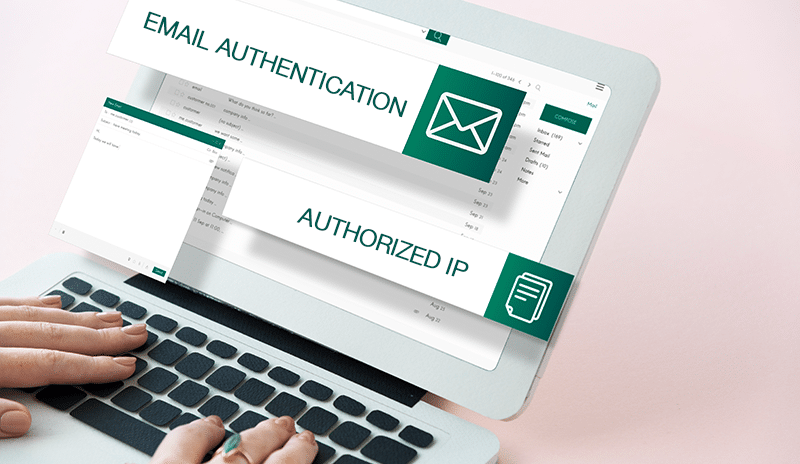DMARC is not a standalone protocol. To work efficiently, DMARC works with two more email authentication protocols: SPF & DKIM. DMARC SPF DKIM together offer solutions to help you secure your domains from fraudulent use and misrepresentation.
SPF stands for Sender Policy Framework. Sender Policy Framework (SPF) is an open, DNS-based email authentication system.
It allows Internet Service Providers to verify if a mail server (IP address) is authorized to send emails for a specific domain.
The administrator of a domain establishes a list of servers or IP addresses permitted to send email on behalf of the domain. This list is updated in the domain’s SPF records. If a fraudulent server attempts to send emails to the “receiving” sever for delivery, the email server confirms if the sender is on the domain’s list of permitted senders.

DKIM stands for Domain Keys Identified Mail. It is a free technology used to trace a piece of email back to the domain that sent it.
An email is signed using a private domain key when it is sent. It is validated on the receiving mail server using a public key located within the DNS. This allows the user to determine if the content of the email was modified during its transfer. It prevents a hacker from modifying your email before it reaches your intended recipients.
The advantage of using DKIM over SPF is that the signatures can survive forwarding.
It establishes the authenticity of the sender using public key (asymmetric) cryptography, to be specific- RSA digital signatures.

It is an email authentication standard that helps businesses understand and improve their email traffic.
DMARC safeguards your organization from phishing and domain spoofing attacks that can harm your brand’s reputation.
DMARC validates email by instructing receiving mail servers how to evaluate emails that claim to be from your domain.

A quick check to monitor your Domain – DMARC, SPF & DKIM status
Frequently Asked Questions (FAQ) regarding DMARC SPF DKIM
Get our experts to help you with your requirement or query.